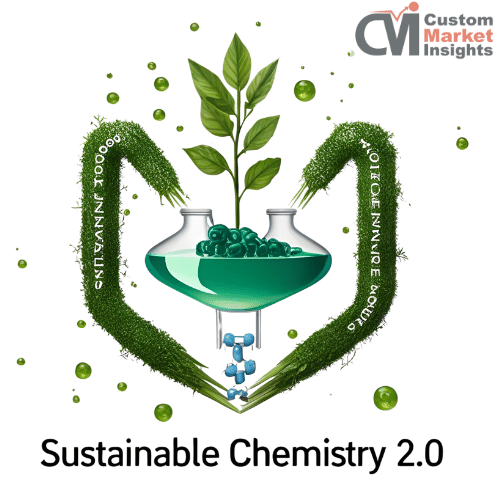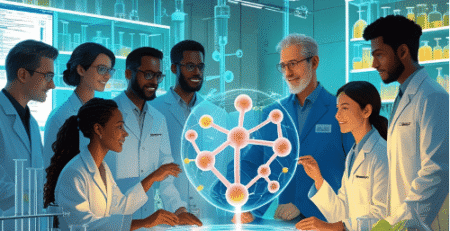The chemical industry is at a pivotal moment. Long considered one of the more energy-intensive and polluting sectors, it’s now undergoing a quiet but powerful transformation. The shift isn’t just about using less plastic or reducing carbon emissions, though those are certainly part of it. We’re talking about something much bigger: Sustainable Chemistry 2.0.
This second wave of innovation marries sustainability with digital intelligence to build a cleaner, more efficient, and future-proof chemical ecosystem. It’s where green meets smart, and it’s arriving sooner than you might expect.
What Is Sustainable Chemistry 2.0?
Let’s break it down.
Sustainable Chemistry 2.0 is not merely about reducing harm; it’s about maximizing value while safeguarding people and the planet. This new paradigm advances green chemistry principles by integrating intelligent technologies, such as AI, machine learning, and real-time monitoring, into chemical production and R&D.
Consider it as a new focal point from which the entire life cycle of a chemical product is perceived, from raw material sourcing to manufacturing, packaging, use, and eventual disposal or recycling.
Why Is the Shift Happening Now?
Three major forces are driving this shift:
- Regulatory Pressure
Governments globally are cracking down on chemical makers. From the EU’s REACH regulation to the U.S. EPA’s emphasis on PFAS and dangerous chemicals, remaining compliant nowadays means companies have to plan ahead and go green.
- Consumer Demand
End customers are more aware than ever before. Whether in B2B or B2C contexts, consumers are asking, “What is in this product?” Where did it originate? What becomes of it afterwards?” Sustainable sourcing, eco-labels, and open chemical profiles are becoming competitive advantage points.
- Technological Advances
Technological leaps in data analytics, predictive modeling, and digital twins now make it simpler to pilot greener formulations, model reactions, and optimize resource consumption, all without the risks and high expenses of old-fashioned trial-and-error approaches.
The Digital Backbone of Green Chemistry
Could you please explain how technology is facilitating this green shift?
- AI-Based Formulation: Machine learning algorithms can scan giant databases of chemical compounds and propose safer and greener substitutes in a matter of seconds.
- Optimization of Process: IoT sensors and data analytics assist in monitoring emissions, waste, and energy consumption in real time, allowing businesses to adjust their processes to make them leaner and cleaner.
- Blockchain for Traceability: Transparency in the supply chain is becoming increasingly important. Blockchain technology guarantees that raw materials are sourced sustainably and traded ethically.
- Digital Twins: Simulated copies of chemical plants enable engineers to assess the environmental implications of changes beforehand, before effecting them in reality.
The result? Reduced emissions, minimized waste, improved safety, and—perhaps most importantly lower operational costs over the long run.
Real-World Examples: Sustainability in Action
Let’s look at how some chemical giants are embracing Sustainable Chemistry 2.0.
- BASF is utilizing AI to create bio-based surfactants and biodegradable polymers. They’ve also implemented digital solutions to track energy consumption and reduce emissions in plants.
- Dow has made investments in advanced recycling technologies that convert plastic waste into valuable feedstock for new products, thereby eliminating waste.
- DSM is creating bio-based resins and is utilizing digital R&D to optimize sustainable product development.
These are only a few illustrations, but the trend is unmistakable: green is no longer optional, it’s a business imperative.
Challenges Along the Way
Of course, this shift doesn’t come without its challenges.
- High Upfront Costs: Switching to greener tech and raw materials can be costly.
- Talent Gaps: Many chemical engineers are still figuring out how to marry sustainability with data science and digital tools.
- Legacy Systems: Existing plants and equipment may not be prepared to adapt to the digital transition.
Still, businesses that begin now are much more likely to remain leaders in the next decade.
The Future: Where We’re Headed
Sustainable Chemistry 2.0 is not an endpoint—it’s a path. In the next five to ten years, we can anticipate:
- Increased bio-based and circular chemical processes
- End-to-end digital platforms for lifecycle tracking
- Sectoral collaboration from agriculture to automobile to create more intelligent, cleaner chemicals
- ESG frameworks and policies are driving the agenda further
In short, the chemical industry’s future will be cleaner, smarter, and more integrated than ever before.
Final Thoughts
Sustainable Chemistry 2.0 is more than an industry trend, it’s an evolutionary imperative. For chemical companies, the present is the time to reimagine what’s possible. It’s not only about minimizing harm; it’s about generating value through innovation, stewardship, and intelligent technology.
By committing to digital transformation and sustainability together, the chemical industry can show the way in creating a better, safer, and more sustainable world. And that’s an investment worth making.
Connect with our Experts


